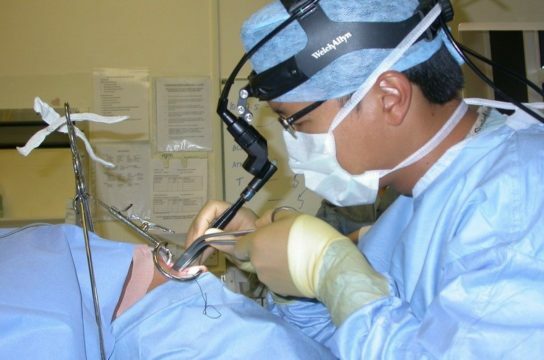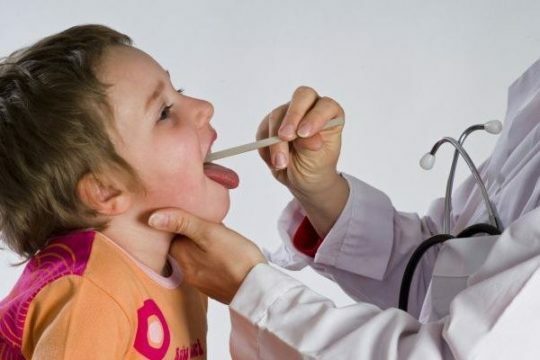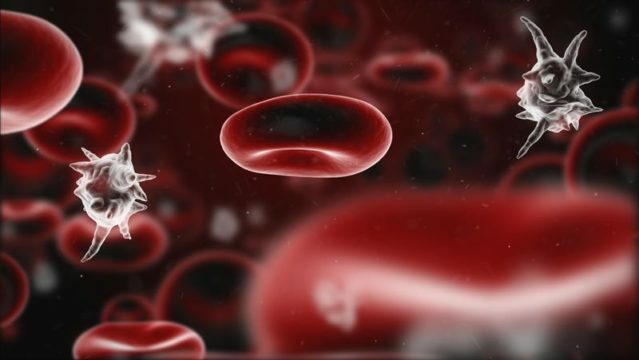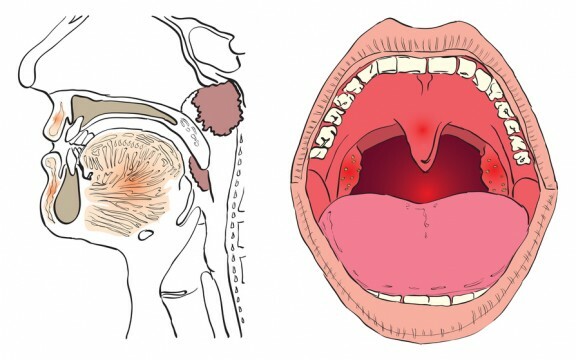Tonsillitis is a disease that develops not only in adults but also in children. It can be chronic or acute, and the treatment is medicated or operative. Let's consider, in what cases tonsils require removal and whether it is possible to remove the child glands without more harm than with them.
General description
The removal of glands in medicine is called tonsillectomy. In this case, either a part of the tonsils or all of their tissues are removed. Glands themselves are an accumulation of lymphoid tissue. This is an important organ of the immune system.
In childhood, the immune system is still considered untenable, and therefore unable to repel all possible attacks of pathogenic microorganisms.
Glands are the first organs to get an infection, transmitted by airborne droplets. With the help of tonsils, the immune system gets acquainted with the incoming microorganism and forms an immune response.
It is at a child's age that frequent inflammation of the glands and their attack by pathogens occur, because the anginas in children appear most often.
When removing tonsils, the infection will immediately enter the respiratory tract. Angin in the child will no longer be, but can develop such diseases as laryngitis, bronchitis, pharyngitis. It is for this reason that it is not always possible to remove tonsils from a child.
On the other hand, chronic tonsillitis will only exacerbate the situation and itself will cause inflammation in the child's body.
Indications for operation
Surgical removal can be indicated in such cases:
- Swelling and enlarged tonsils to dimensions that prevent normal breathing. Such an increase can lead to apnea - the cessation of breathing in a dream for several minutes, and also to hypoxia - a lack of oxygen in the tissues and organs of the body.
- Frequent angina in a child - more than three times a year.
- Complications of child angina, extending to the heart, joints and kidneys.
Patients with tonsils are an environment for the accumulation of pathogenic bacteria, so they can complicate the work of the heart and joints. Particularly dangerous in this case is rheumatism - the damage to the joint fluid and disruption of the heart.
Types of operation
The times when tonsils could only be removed with a wire loop were long gone. Today, there are several more gentle and bloodless methods that allow the removal of tonsils in children, with minimal trauma to the body. In addition, such methods promise a quick enough rehabilitation.
In addition to the traditional removal of a wire loop or a microdetector, the removal can be carried out:
- A laser beam that removes the affected areas of the lymphoid tissue with little or no blood flow, as it is instantly also baked by a laser beam. The method is preferable and loyal, but it is contraindicated for children under five years old.
- Ultrasonic high-frequency waves, under the influence of which lymphoid tissues are destroyed. This operation is called ultrasonic tonsillectomy.
- Freezing - cryodestruction of the tonsils is the most gentle method, while the tonsils are simply frozen and their functioning stops.
- The electrical method that occurs in the practice of tonsillectomy is quite rare.
Is it possible to carry out the operation of a child in one way or another, the doctor will determine, setting the age of the patient, the degree of damage to the tonsils and their effect on the body as a whole.
Anesthesia
Anesthesia and surgery are the most serious issue during the planning of an operation. Tonsillectomy is a simple procedure that lasts no more than an hour and does not require, in fact, general anesthesia.
It can be carried out under local anesthesia, but the child must remain stationary throughout the operation. This is difficult to achieve. Sometimes doctors offer special limb rest locks to limit the mobility of the child at the time of tonsil removal.

But the use of such methods only aggravates the patient's psychological state and leads to difficulties in preparing for surgery. Therefore, a common type of mask or inhalation anesthesia is often chosen. He will be selected by an anesthesiologist.
Carrying out the operation
Special preparation for such removal is not carried out. It is enough to listen to the doctor's recommendations about what you can and what you can not eat for a while before the operation.
The child is first given a mask anesthetic - the anesthetic gas acts in such a way as to put the central nervous system to sleep and turn off the consciousness, respectively, the child will not feel pain.
Then the removal is carried out, only one tonsil or a part of it can be removed, or both tonsils at once. Mainly, healthy tissues try to preserve.
After this, the child is placed in the ward of postoperative rehabilitation, where he leaves the anesthesia and returns to consciousness. The duration of the operation depends on the selected species. Removal surgically lasts an hour, using a laser - about half an hour, and freezing requires several minutes.
Rehabilitation
The rehabilitation period depends on the method of removal chosen.
- The first days the child is in the hospital for the doctor to observe the healing process and the body's reaction. If complications are detected, appropriate treatment is performed.
- If a laser method or cryodestruction was chosen for the operation, rehabilitation in the hospital is not required, and when the child regains consciousness, one can return home.
- Pain syndromes and swelling may occur within seven days after the procedure. Completely get rid of discomfort can only be three weeks after the surgery. Within a day after the operation a whitish coating or crust forms, which indicates the healing of the tissue.
- During the postoperative period, it is recommended that a sparing diet be observed. In addition, you can not tear and strain the vocal cords - screaming, singing, loud laughing. Eliminate rude food from the baby's diet, do not serve too hot and cold dishes - food should be warm.
- It is forbidden to eat spicy dishes, too salty and pickled.
Violation of even such simple rules can lead to the development of complications.
Possible complications of
Complications after any surgery are divided into two types: caused by medical actions and caused by patient negligence.
- The complications of the first type include infection, bleeding, possible infection of blood. This is due to poor disinfection of the instruments used during the procedure, or due to inexperience or negligence of the doctor.
- Complications of the second type are caused by non-compliance with medical recommendations. Eating too cold food, such as ice cream, can slow healing and even cause bleeding, just like hot food.
The tension of the vocal cords is fraught with bleeding due to the fact that the ligaments and glands are interrelated, and the tension in this area will strain and only the healed vessels and tissues.
Sometimes without removing tonsils you can not do. In some cases, by washing lacunas and disinfection of the tonsils, one can manage and save this organ of the immune system.
Before deciding on an operation, consult a few doctors. Perhaps someone will suggest an alternative and less radical method of treatment. Decisions on surgery at such a young age can only be made if more gentle methods have been used and have not given proper results.
Do not try to cure tonsillitis only in folk ways, as they are not substitutes for traditional therapy, and without the recommendations of an experienced doctor can only exacerbate the situation.
According to reviews, removal of glands where it was really inevitable led to the fact that the child completely ceased to suffer from angina, and for its rehabilitation and maintenance of immunity vitamin complexes and a vitamin-rich diet were prescribed.






